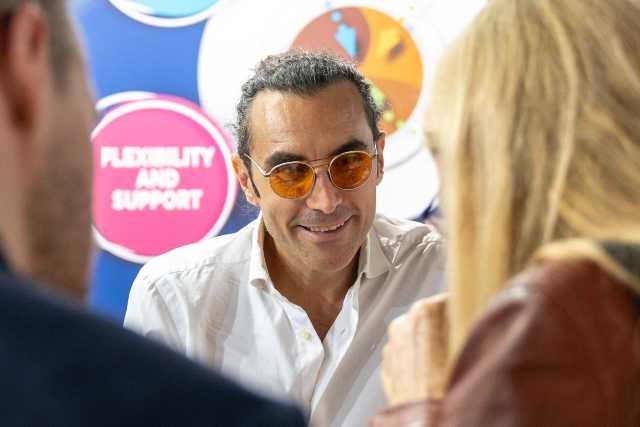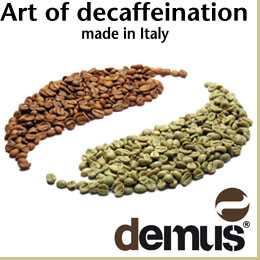Matteo Borea, Barista Coach and third generation of La Genovese roasting company in Albenga (Savona), provides an in-depth and interesting analysis about the condition of coffee growers, who are often disadvantaged and frequently unable to earn enough to cover production costs.
Borea cites the study by Solidaridad Network, Sustainable Trade Initiative (IDH), and Global Coffee Platform, titled “The Grounds for Sharing: A study of value distribution in the coffee industry,” which examines the coffee market in Germany and in four producing countries (Brazil, Colombia, Ethiopia, and Vietnam) to understand how coffee value is distributed. Below, we share his analysis.
The farmers in the coffee supply chain
by Matteo Borea
MILAN, Italy – When examining the coffee supply chain, it’s evident that farmers are the most disadvantaged. They don’t earn enough to cover production costs, often cultivating at a loss. So, is it enough to ask consumers to pay more? The answer is a definitive NO. Recently, a study by Solidaridad Network, Sustainable Trade Initiative (IDH), and Global Coffee Platform, titled “The Grounds for Sharing: A study of value distribution in the coffee industry”, analyzed the distribution of value, costs, taxes, and net profit margins along the coffee supply chain, from farmers to end consumers.
The 74 page report, attempts to answer the crucial question: Is there enough value in the supply chain to guarantee an economically sustainable income for farmers?
This study, which took 18 months to complete, examines the coffee market in Germany and four producing countries (Brazil, Colombia, Ethiopia, and Vietnam) to understand how value is distributed as coffee moves from the producer to the importer, roaster, and finally to the retailer.
Here are the key points that emerged from the report:
- Value is concentrated in consumption:
About 20% of the coffee’s value remains with producers, based on farm-gate prices (or the actual amount a farmer is paid relative to the FOB price, which is the price a buyer pays to an exporter and may include other costs associated with transportation). This percentage seems higher compared to previous estimates (around 10%), but this doesn’t mean farmers are earning more. Many are still cultivating at a loss.
2. Value distribution:
Roasters and retailers represent 21% and 22% of the coffee’s value respectively, while the remaining 35% is distributed among taxes (almost 30%), export, and transportation costs.
“The study shows that there is an overall profit to be made on all aggregated coffee products for the German market,” the report states. “What is very clear for each of these, however, is that the added value is concentrated in the lower part of the supply chain (from importer to retailer) and is limited at the farmer level.”
3. Undervalued family labor:
The study also breaks down the value that each sector of the supply chain takes relative to its profit. For every kilogram of coffee, farmers earn an average of €0.41 ($0.44). But that number is probably not as clear as it seems.
A major obstacle identified by the study is family labor: many small farms operate with the help of family members, and that work is almost never accounted for when discussing income – spouses, children, and siblings might work on a plantation, and the report identified that this work often goes unpaid.
4. Asymmetry in capsule value:
The report examined coffee in general but also broke down the value distribution for certain types of coffee, such as ground versus whole bean, versus coffees with specific certifications. Perhaps the most significant differences in value distribution appeared in the coffee capsule sector.
Although capsules represent a small percentage of the coffee consumption sector in Germany, retailers can make significant profits from them. Where retailers might earn a few cents per kilogram of coffee sold as beans or ground, they earn an average of €7.52 profit per kilogram sold in capsules.
That value creation, however, does not flow from the retailer to the producer. A producer will hardly profit from that differentiation of value in the market.
The estimates on capsules underscore that there is an asymmetry between the high share of value going to the retail and roasting stage versus the low share of value going to the coffee growing stage.
This confirms that if we ask consumers to pay more today, there is no mechanism to get that money to producers.
The study suggests that the value generated in the consumer-facing part of the supply chain remains with retailers, which challenges the assumption that convincing consumers to pay more for coffee will result in higher wages for growers.
5. Risk and value along the supply chain:
It’s important to contextualize value and profit. For many retailers, coffee beans are not the only thing they sell, but for producers, coffee is often the only crop they grow. The ability to manage risk is essential to value. If you’re a producer, you don’t have that option to manage your risk like other actors in the supply chain.
“The ability to realize margins is given by the ability to diversify one’s portfolio across products and countries,” the report states. “However, these tools are not equally accessible along the supply chain. Upstream, there is often less opportunity to diversify.”
But what interventions are needed?
The findings of this report are not conceptual or theoretical but give the industry practical data to work with. One of the calls to action for the industry is to try different mechanisms to see what it would be like to redistribute value, because there is enough of it. The problem is that these mechanisms to get that value downstream don’t exist.
Two key interventions are needed: sector-wide commitments on sourcing practices that enable value redistribution and partnerships along the supply chain that design and implement mechanisms to add, create, and transfer value.
With the right mechanisms, companies can more easily comply with due diligence and reporting requirements, and ensure a sustainable coffee supply in the long term.
It’s clear that coffee farming is not economically sustainable for growers. The fact that there is value in the sector is both an alarm that industrial models need to be changed and a beacon of hope that there is a path to building a sustainable industry.
The hope is that this report will serve as a model for future studies and a call to action for downstream actors to start rethinking how they can actively redistribute value”. To download the full report click here.
Matteo Borea


















